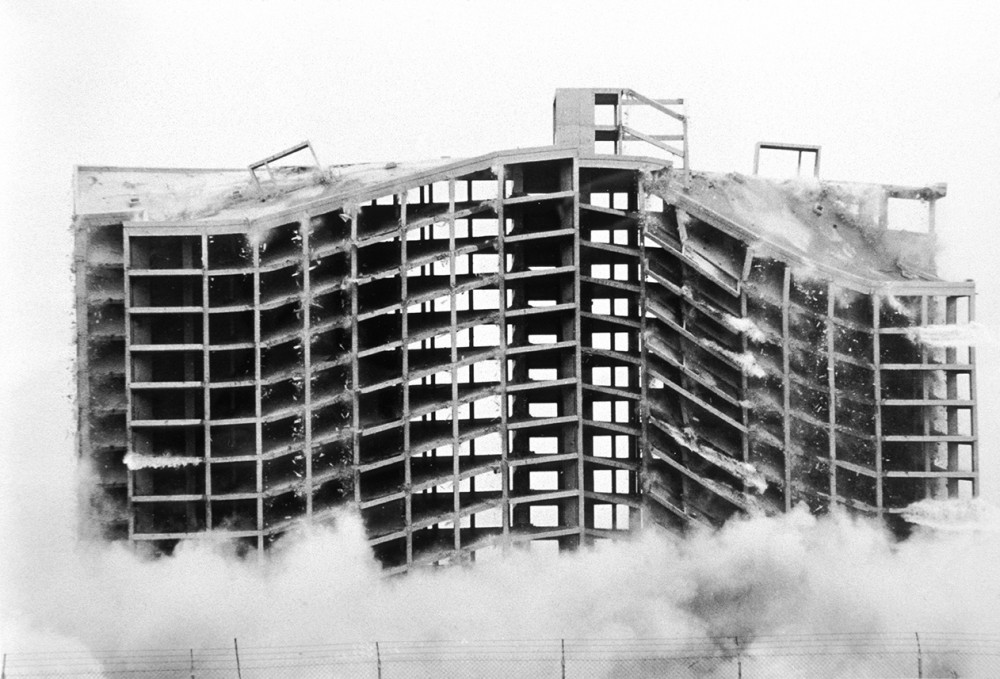BOOK CLUB: Reinier de Graaf, Four Walls and a Roof: The Complex Nature of a Simple Profession
Reinier de Graaf is a cynic, in the sense of someone who assumes that human behavior will largely be motivated by self-interest and its attendant selfishness and shortsightedness (which isn’t quite the same thing as a misanthrope). As one of OMA’s longest-serving non-founding partners (he joined the firm in 1996), and an architect since just before the fall of the Berlin Wall, he’s had the opportunity to see a fair amount of self-interested human behavior in everyone from mayors and dictators to developers and oligarchs, as well as observing at first hand the (frequently unintended) effects which that behavior has had on our built environment across the globe. He’s gathered his observations into a book of 44 pithy, very entertaining, slightly English-as-a-foreign-language essays, which, if you believe the title, add up in the agglomerate to paint the portrait of a profession.

The Brandenburg Gate in Berlin during the fall of the Berlin Wall in 1989.
With mordant glee, de Graaf points up some of the more startling absurdities of architecture as it is practiced today. Highlights include the inadvertent hilarity of biennial panel discussions, the inevitability of the box as an architectural solution (“The ultimate box is the one we all end up in”), the awful dystopian potential of smart technology, the conscience-washing lip service that constitutes much public consultation, ruminations on a property-developer president of the United States, and an autobiographical account of OMA’s utterly Kafkaesque ― in the sense of shapeshifting and hallucinatory ― participation in a science-park master-planning “competition” in Russia. By turns thought-provoking and tragicomic, but ultimately frustrating, the book portrays the architect as an impotent, and ever more irrelevant, stooge of a globalized market-economy world. While one ends up feeling de Graaf is no doubt right, the book is sometimes let down by sweeping historical generalizations and a tendency to let easy aphorisms get in the way of what it is he really means to say. Moreover is a declaration of powerlessness, with no suggestion as to what might be done, really good enough?

Unfinished apartment buildings from the 1970s being demolished in Breezy Point, Queens (2002).
Interviewed about the book, de Graaf has said he thinks architects take themselves too seriously. Which would suggest a reading of Four Walls and a Roof as a series of stand-up Dutch-cabaret turns, their black buffoonery intended to take the likes of Herr Schumacher down a peg or two. But stretched across 500 pages, this gallows humor becomes relentlessly bleak. Moreover de Graaf is betrayed by his own integrity. For despite his detached, amoral aplomb, one suspects the book was partly written in consternation at what has become of the postwar-boom, welfare-state world in which he grew up. Indeed perhaps the most poignant section — which de Graaf has admitted was key to the publication of the book — is the one (ironically) titled Progress. It includes the essay The Century That Never Happened — in which de Graaf looks at the fate of 20th-century architecture, and particularly social housing, through the lens of Thomas Piketty’s 2013 book Capital in the Twenty-First Century — accompanied by In Memoriam: a Photo Essay charting the destruction of 30 large-scale Modernist schemes from Pruitt-Igoe (St. Louis, MO, 1972) to Plattenbauten in Neubrandenburg (Germany, 2016). Here de Graaf offers a pretty good case for concluding that the ever-increasing concentration of wealth in just a few hands is impoverishing just about everyone and everything, architecture included. So let’s hope that one day he’ll take himself too seriously, broaden and deepen this research to cover a longer historical time period, and write the book that could really tell us where we might be headed — and what we might actually do about it.
Reinier de Graaf, Four Walls and a Roof: The Complex Nature of a Simple Profession (Harvard University Press, 2017).
Text by Andrew Ayers.
Join Reiner de Graaf and architecture critic Paul Goldberger this Friday, May 03, 2018 for a conversation about the book at 92nd Street Y in New York City.
Taken from PIN–UP 24, Spring Summer 2018.





